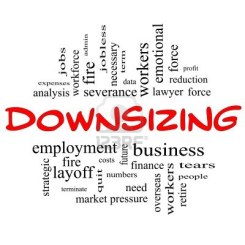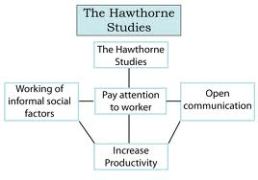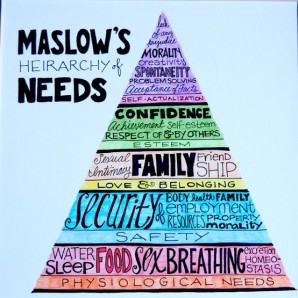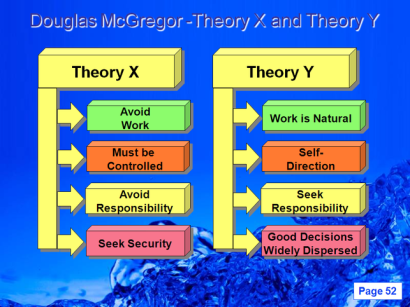
“A lot of companies have chosen to downsize, and maybe that was the right thing for them. We chose a different path. Our belief was that if we kept putting great products in front of customers, they would continue to open their wallets.” – Steve Jobs
Corporate downsizing…it’s a cringe worthy topic for all parties concerned…clearly, most of all for the employee being directly affected by this insidious option that so many companies choose to take. But, also for the other parties involved in this process; the supervisor or manager having to make the decision and/or take the action. Also for the remaining employees, not only left with the responsibility to pick up the slack from the downsized employee’s absence, but also left to wonder whether they might be next on the cutting block.
As the saying goes, necessity is the mother of innovation. We look at one employee’s innovative idea to fight the effects of downsizing….
A Human Relations Case Study: “What about Melissa?”
The year is 1990. Simmons Insurance Group is a small, highly respected, A-rated subsidiary of a large British conglomerate. The company is traditionally structured with four departments including marketing, financial, sales, and claims. At one time, Simmons had over 200 employees, but today it has been cut back to about 50.
Melissa, a bright, highly motivated individual, has worked for the Simmons Insurance Group for four years. She started as a summer intern right after college graduation working across departments learning the basics about coverage, investigations, liability, damage assessment and settlement of claims. Melissa was a star performer and, at the end of her internship, she was hired full time as a claims associate. Within a year of her hire date, Melissa was promoted to senior claims associate. Although she works long hours, Melissa enjoys her job for the variety of skills it requires. She is well liked by her coworkers in all departments, particularly for her willingness to lend a hand with any problem that arises. Melissa has hopes of being promoted to claims manager soon. However, due to cutbacks, the claims department recently experienced substantial downsizing and Melissa’s group has already been cut in half.
Fearing that her job is next on the chopping block, Melissa approaches senior management with the idea that a new position be created for Melissa. Melissa witnessed problems arise when there was miscommunication between departments. Seeing a need to break up the silos of the organizational structure, Melissa suggests that her job title be Director of Internal Support and that her job responsibilities would include supporting all departments with whatever needs arise but most importantly to bridge departments to ensure consistent, open communication and excellent customer relations. Senior managers are wary of the new position, particularly given budget constraints. They meet to discuss the matter.
What ensues after Melissa’s converation with senior management?
Knowing what we do about the organizational communication method that Simmons Insurance Group takes, that of a human relations approach, we might say that although the senior managers were initially wary of the idea, they soon realized the value of having someone in a position of liaison between the four departments. This would be particularly true if there had been issues of miscommunication between these areas, resulting in reduced production.
The supporting principle of the human relations approach has been construed as an objectionable readiness to exchange profitability for employee well-being (Eisenberg et al., 2010, p.73). The work of Follett, Mayo and Barnard provided the foundation for the human relations approach. This approach emphasizes the interpersonal and social needs of individuals and assumes that all people “want to feel united, tied, bound to something, some cause, bigger than they, commanding them yet worthy of them, summoning them to significance in living” (Eisenberg et al., 2010, p.71).
With human relations, the ultimate goal is increased productivity. The satisfying of employee’s needs is done in the hopes that this will lead to increased output. In contrast, human resources approach focuses on the needs of the employee because the goal is to incorporate their individual, innovative ideas because they look at employees as a human resource that can only enhance the organization. By satisfying the employee’s needs, they will ultimately accomplish the organizational goals as well (Miller, 2009, p.45).
A perfect example of one corporation’s attempt at a human relations approach to increase production can be seen in the Hawthorne study. Lead by Mayo, research was done with employees at Western Electric in Illinois, to determine ways in which they could counteract widespread employee dissatisfaction, high turnover rates and reduced plant efficiency. Mayo and his colleagues studied the relation of increased degree of illumination in the work environment to that of increased production. They found that production increased whether the lighting was increased or decreased during this study, and came to the conclusion that the results had little to do with the degree of lighting, but rather the increased attention being given to workers by management and researchers was the key to increased productivity. This has come to be known as the Hawthorne effect (Eisenberg et al., 2010, p.73). The take-away findings from this study can be inferred that there are many needs that employees have, that once met, can encourage them in a positive way to increase production and/or work quality.
In contrast, there is the human resources approach. Three theorists were fundamental in the development of this method: Maslow, McGregor and Likert. While incorporating most of the assumptions of human relations, the human resources approach is concerned with the total organizational climate as well as with how an organization can encourage participation and dialogue (Eisenberg et al., 2010, p.75). The human resources approach acknowledges contributions of classical and, especially human relations approaches to organizing. “Human resources theorists recognize that individuals have feelings and that must be considered and also recognize that individual labor is an important ingredient for meeting organizational goals” (Miller, 2009, p.43).
For example, Maslow’s Hierarchy of Needs theory serves as a prototype of the human relations approach to organizing and management (Miller, 2009, p.38). Maslow’s model, is based on the 5 types of needs that facilitate human motivation: physiological (to be able to earn enough to meet basic needs of feed, shelter, etc), safety (physical safe working conditions), affiliation (social relationships with coworkers), esteem (rewarding work and good pay), self-actualization (work allowing the exercise of creativity) (Miller, 2009, p.39).
McGregor’s theory X is representative of a manager influenced by the most negative aspects of classical management theories, versus Theory Y, which is more in line with principles of the human relations approach. McGregor proposes that the beliefs of managers, following his Theory X, that are widely held by managers are incorrect. That is that it is human nature for the average employee to work as little as possible, and that they lack ambition, are self-centered, resistant to change, gullible and not very bright (Miller, 2009, p.40). Through his Theory Y, McGregor posits that managers should conceptualize that workers are motivated by the higher-order needs of Maslow’s hierarchy and that they are capable of independent achievement in the work environment (Miller, 2009, p.41). The Theory X managerial approach would be that a strong/forceful hand is essential for harnessing the efforts of unmotivated workers, whereas, Theory Y assumes that workers are highly motivated to satisfy achievement and become self-actualized (Miller, 2009, p.41).
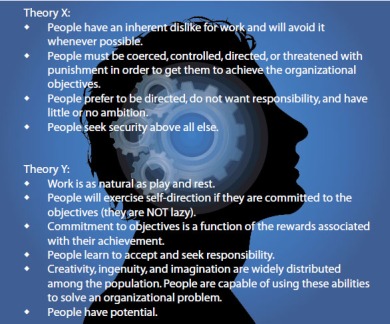
Therefore, knowing that Simmons ascribes to the human relations approach, management would likely convene for a meeting of the minds, without Melissa being present, to discuss the employee’s proposition. Acknowledging that Melissa has been a star performer, and has benefited the company through her experience, they would likely want to keep her employed with them. With the number one priority being what is best for the company, and only looking at the employee’s needs as a means to reach corporate goals, they would likely posit that creating this type of position could potentially reduce current ongoing issues of disconnect between departments. On the one hand, they might be reluctant to consider this a “director” position for a number of reasons, particularly the increased salary grade warranted for this level of position. A resolution to this might be to propose this new position be considered more of a supervisor or managerial level. This would still provide opportunity for advancement for Melissa, and enable them to accomplish their corporate goals of solving existing problems that are resulting in decreased production.
Question: Do we think this is a fair compromise, resulting in a win-win situation? How do we think Melissa will react?
Eisenberg, E. M., Goodall Jr., H. L., & Trethewey, A. (2010). Organizational communication: Balancing creativity and constraint (6th ed). Boston, MA: Bedford/St. Martin’s.
Miller, K (2009). Organizational Communication: Approaches and Processes. (5th ed). Boston, MA: Wadsworth Cengage Learning.
All images courtesy of Google Images.

